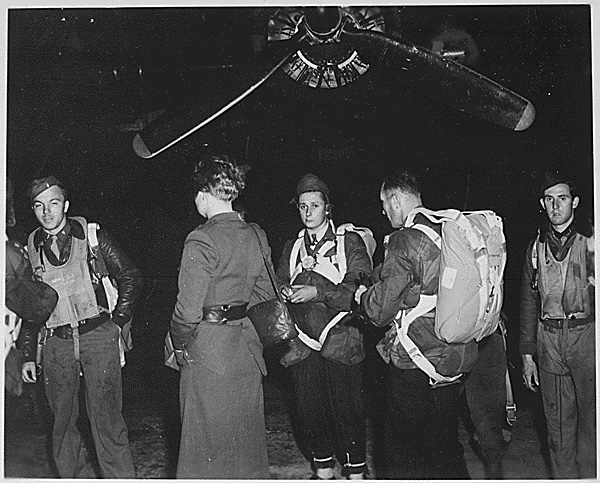Ezekiel was an exile. Born in the kingdom of Judah, he survived the siege of Jerusalem, in 597 B.C.E., but afterward was banished with his fellow-Jews to Babylon. While there, he had an arresting vision: He saw himself in a valley filled with human remains, as if a terrible battle had taken place there long ago and the vanquished still lay where they were slain. Then God spoke to him, and the bones reconfigured into skeletons, the skeletons filled out with flesh, and the wind began to blow toward them from all directions. All at once, the Book of Ezekiel records, “the breath came into them, and they lived, and stood on their feet, a vast multitude.”
To restore the dead to life: that is the prerogative of gods, but also the purview of historians. The past, too, is a valley of dry bones, its inhabitants permanently silent, its artifacts scattered and bleached to bareness. Those who manage to make it vivid again are praised in the language of miracles: they “bring history to life,” they “resurrect” a bygone era. On the page, such revivification generally takes familiar forms—meticulously researched nonfiction, doorstopper biographies, the occasional stellar work of historical fiction.
But now comes the British writer Rachel Cockerell, raising up a vast multitude of the dead in her dazzling début work, “Melting Point” (Farrar, Straus & Giroux), a book unlike any of those, and unlike anything I’ve ever read. At the heart of her tale lies an early-twentieth-century initiative that was undertaken with absolute earnestness at the time but seems almost farcical today: a multicountry effort to redirect America’s enormous influx of Jewish immigrants from Ellis Island to Galveston, Texas. So overlooked and enticing is this historical episode that even a workaday writer could make hay with it, but Cockerell is not a workaday writer. In fact, on the evidence of “Melting Point,” it’s not clear whether to call her a writer at all, although her book does boast a lucid and compelling preface and afterword. In between, however, it is composed entirely of primary sources, which talk to, argue with, and jostle against one another without authorial interruption for three hundred and forty-five pages.
This experiment could have gone wrong in any number of ways—by seeming contrived, by seeming disjointed, by imposing on its readers the irksome requirement of tracking which voice is saying what across two continents and the better part of a century. Instead, improbably, it goes exactly right. That is partly because of the thrill of eavesdropping directly on the past; stripped of any post-facto commentary, the characters and events in these pages feel startlingly present, in both senses of the word. But the book also works because only so vast a chorus of voices could do justice to the larger story that “Melting Point” is telling, one that has always been morally complicated and seldom more so than today: the history of an imperilled and exiled people and their courageous, visionary, blinkered, desperate, desperately catastrophic effort to find a place to call home.
The book Rachel Cockerell set out to write was nothing like this. What she had in mind, she tells us in that preface, was a straightforward family history—an account of her grandmother and great-aunt, two sisters who together raised seven children in a grand old Edwardian house in North London during and after the Second World War. Mindful that she should establish how the sisters wound up so far from their birthplace in the Russian Empire, she planned to include a brief mention of their father—her great-grandfather—a man by the name of David Jochelman, who had moved his family to London at the outbreak of the Great War. She figured that she would dispense with him in “a sentence or two, a paragraph at most.”
One inescapable lesson of “Melting Point” is that the past is always infinitely stranger and more interesting than we imagine; another is that, paradoxically, most of it is consigned with stunning rapidity to oblivion. Although there was just one generation between them, none of the children who grew up in that North London house could remember much about their grandfather, beyond blandly characterizing him as a businessman, so Cockerell dutifully sat down to learn about him. In short order, she discovered that Jochelman was not a man to be contained in a paragraph. One of the preëminent Jewish leaders of his time, he helped establish and run the Jewish Territorial Organization, which split off from mainline Zionism to look beyond Palestine for a viable Jewish homeland. In that capacity, he helped implement something Cockerell had never heard of: the Galveston Plan.
That plan soon derailed her own. As Cockerell dug deeper into Jochelman’s past, a whole world began to emerge, largely unknown to her despite her own family history. There was Theodor Herzl, whom she had vaguely pictured as a gray-haired elder statesman of Zionism, when in fact he was an impossibly handsome, irresistibly charismatic Austrian journalist who prophesied the devastation of European Jewry and promulgated the idea of a Jewish state, then died, at forty-four, before either one became a reality. There was Israel Zangwill, a name that I, like Cockerell, had never heard before, even though he was once the most famous Jew in the Anglophone world—a novelist whose popularity was frequently compared with that of Dickens, until the craft of fiction became less important to him than the cause of Zionism.
Captivated by these and other voices, Cockerell decided to dramatically widen the scope of her project. But, when she finished a draft of the book, something felt wrong. She had written it as conventional nonfiction, using primary sources for facts and quotations and her own authorial presence to guide readers through the tale; on rereading it, though, she found herself annoyed by the sound of her voice. “Everything I said,” she writes, “fell into three categories: a twenty-first-century-tinged observation, a paraphrase of a primary source, or a description of a character’s feelings.” All three, she concluded, were unnecessary: “The first took the reader out of the story, the second could be substituted with the original quotation, and the third could be shown, not told.” And so she started over, this time removing herself from the text and relying exclusively on the voices—as captured in letters, memoirs, diaries, transcripts, and contemporaneous newspaper accounts—of those who had lived through the history she was exploring.
The resulting work looks like a traditional book, except that it has slightly wider interior margins, in which, with maximum brevity, Cockerell indicates the source of the text that appears beside it: “Chaim Weizmann” or “Wichita Daily Eagle” or “Thomas Edison” or “Jewish Chronicle, 7 July 1904.” For approximately three pages, I wondered whether I would find this in-situ citation distracting or annoying. Then my mind adjusted and the technique turned translucent, leaving me staring directly into the story.
And “story” is the right word. Peculiarly, for a text constructed solely from historical documents, “Melting Point” reads like a work of fiction. The only books it even faintly reminded me of were all novels: the “U.S.A.” trilogy, by John Dos Passos (who has a cameo in it); George Saunders’s “Lincoln in the Bardo,” which Cockerell herself cites as an inspiration; and, above all, “A Place of Greater Safety,” the long, unruly, utterly gripping novel about the French Revolution that Hilary Mantel wrote before making her name with the “Wolf Hall” trilogy.
All three of those books likewise incorporate primary sources directly into their pages, but none of them do so exclusively, as Cockerell does. Some of her sources show up once, for a few lines; others get their say without interruption for a half-dozen pages; others become recurring characters. Plenty are famous (Theodore Roosevelt, Dorothy Day, D. H. Lawrence, David Ben-Gurion), though some of the most memorable lines belong to everyday people. (“She never really was a Zionist,” one woman remarks of her mother. “She only went for the weather.” Another observes, “In the South, there’s a great deal of holding your head high in spite of everything.”) Collectively, these voices are coaxed by Cockerell, who has a keen ear and fine sense of timing, into becoming some of recent literature’s most compelling narrators.
“A year ago, while I was drinking afternoon tea in a London drawing room, there entered a tall, lithe man, with coal black hair, beard and mustaches, restless visionary eyes, and a nervous mouth, twitching with half-sad humour”: so “Melting Point” begins, sounding for all the world like a Graham Greene novel. The tall man is Theodor Herzl—a man, we soon learn, who makes other men want to dress better; a man who, when heading north through Vienna, inspires those heading south to abandon their itinerary and turn around just so they can walk with him. He is elegant, eloquent, the darling of the Austrian aristocracy—until 1896, when he produces a slim pamphlet, “The Jewish State,” which rekindled the dream, at the time moribund for the better part of two millennia, of establishing a permanent Jewish homeland in Palestine.
All around him, people scoffed. Other Jewish members of the Viennese upper crust spoke German, felt Austrian, and could not fathom why they should move to a hostile scrap of desert two thousand miles away. The editors of the London-based Jewish Chronicle accurately articulated Herzl’s prescient position but did not endorse it: “He foresees coming storms all over the civilised world. From these catastrophes there is, in his view, no possible escape, unless the Jews deliberately determine to remove themselves from the storm-laden atmosphere before the irresistible doom breaks over them.” Like Herzl’s high-society friends, those editors found it “hard to accept these gloomy prognostications.” But outside those rarefied circles it was not hard at all. As the Austrian writer Stefan Zweig put it, Herzl’s manifesto was received with overwhelming enthusiasm not “from the well-situated, comfortable bourgeois Jews of the West but from the gigantic masses of the East, from the Galicians, the Polish, the Russians of the ghetto.”
And it had another champion, too. Before publishing his pamphlet, Herzl had gone to London to seek the support of the brilliant young novelist whose reputation had already spread to Continental Europe. On the face of it, Herzl and Israel Zangwill were almost comically mismatched; while the former was handsome and polished, the latter looked, according to one source, like “one of those sculptured gargoyles in a mediaeval cathedral” and was, according to another, “one of the worst-dressed men in London.” (“You have seen his pictures,” one wag quipped. “He looks like them.”) But Zangwill was also both charming and so famous that contemporaneous pundits confidently declared that “everyone” knew his novels, and Herzl recognized that he would be an invaluable asset to the cause of Zionism.
Together with an ever-expanding group of supporters, this odd couple began holding annual congresses to build momentum for the Zionist movement among global Jewry. Meanwhile, they were also negotiating behind closed doors with the British, who, being near the peak of their imperial power, held the keys to plenty of kingdoms—including, eventually, Palestine. Then, in 1903, news broke of a shocking massacre in the town of Kishinev, in the southwestern reaches of the Russian Empire. Upon leaving Easter Sunday services, a group of townspeople began roaming the streets and menacing their Jewish neighbors; by the following day, the mob had murdered forty-nine of them, including babies and children, injured some six hundred more, raped hundreds of women, and destroyed fifteen hundred homes. It was Kishinev that first taught much of the non-Jewish world about pogroms, thanks in part to the rise of photojournalism; images of the slaughter appeared in newspapers around the globe. But even among Jews, who were already far too familiar with antisemitic violence, Kishinev was a wake-up call, and vast numbers of them, especially those in Russia, soon began seeking new homelands.
It was largely because of Kishinev that Herzl felt compelled to present to the next Zionist Congress an alternative Zion: although a homeland in Palestine was as yet unattainable, the British government was prepared to donate five thousand square miles of territory in East Africa to the Jewish people. This was known as the Uganda Plan, even though the land was actually in Kenya, and it created a furor at the Congress. “When the map of Palestine was covered by a map of Uganda,” one attendee wrote, “the delegates felt as though they were watching a total eclipse of the sun.” Nonetheless, when put to a vote following days of impassioned debate, the proposal passed, and a fact-finding team was dispatched to the Mau Escarpment to look into the feasibility of establishing a Jewish nation there.
Premium IPTV Experience with line4k
Experience the ultimate entertainment with our premium IPTV service. Watch your favorite channels, movies, and sports events in stunning 4K quality. Enjoy seamless streaming with zero buffering and access to over 10,000+ channels worldwide.

















